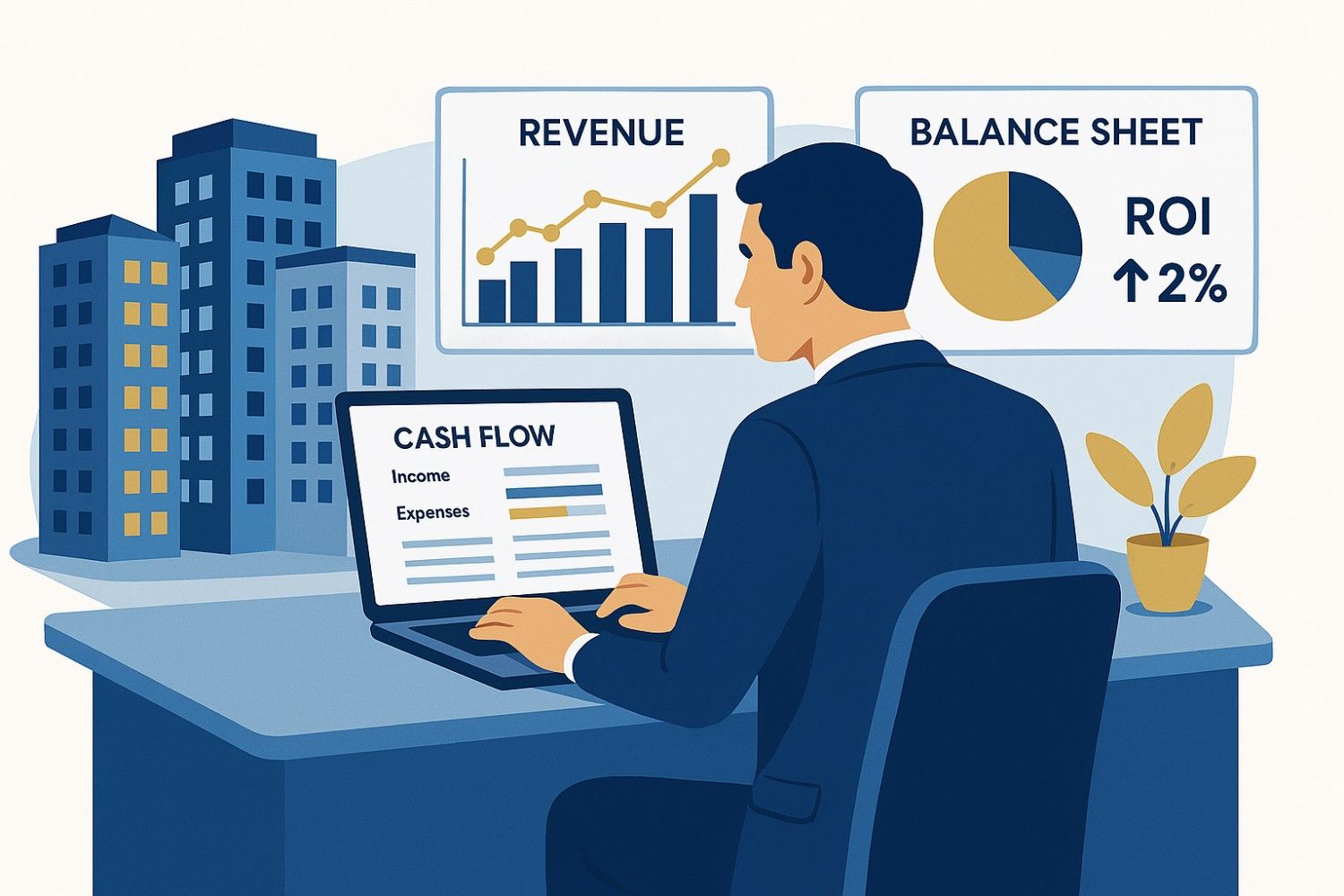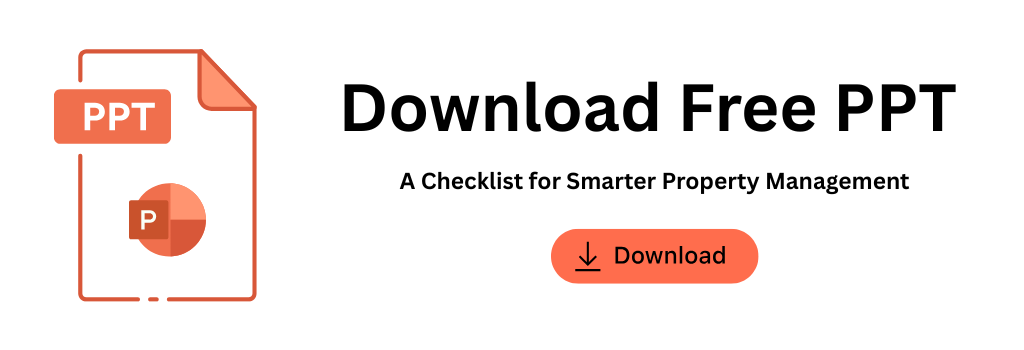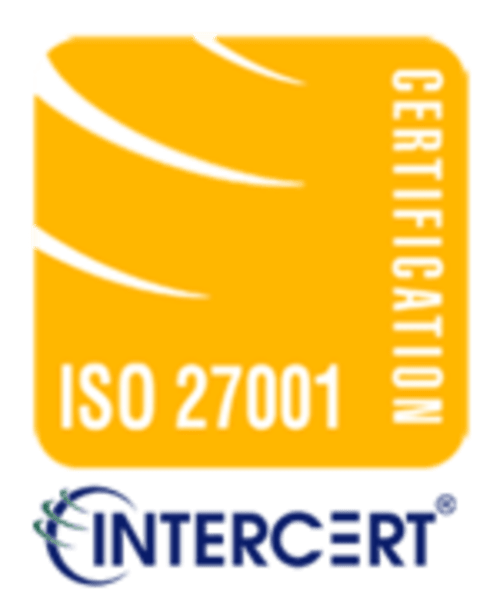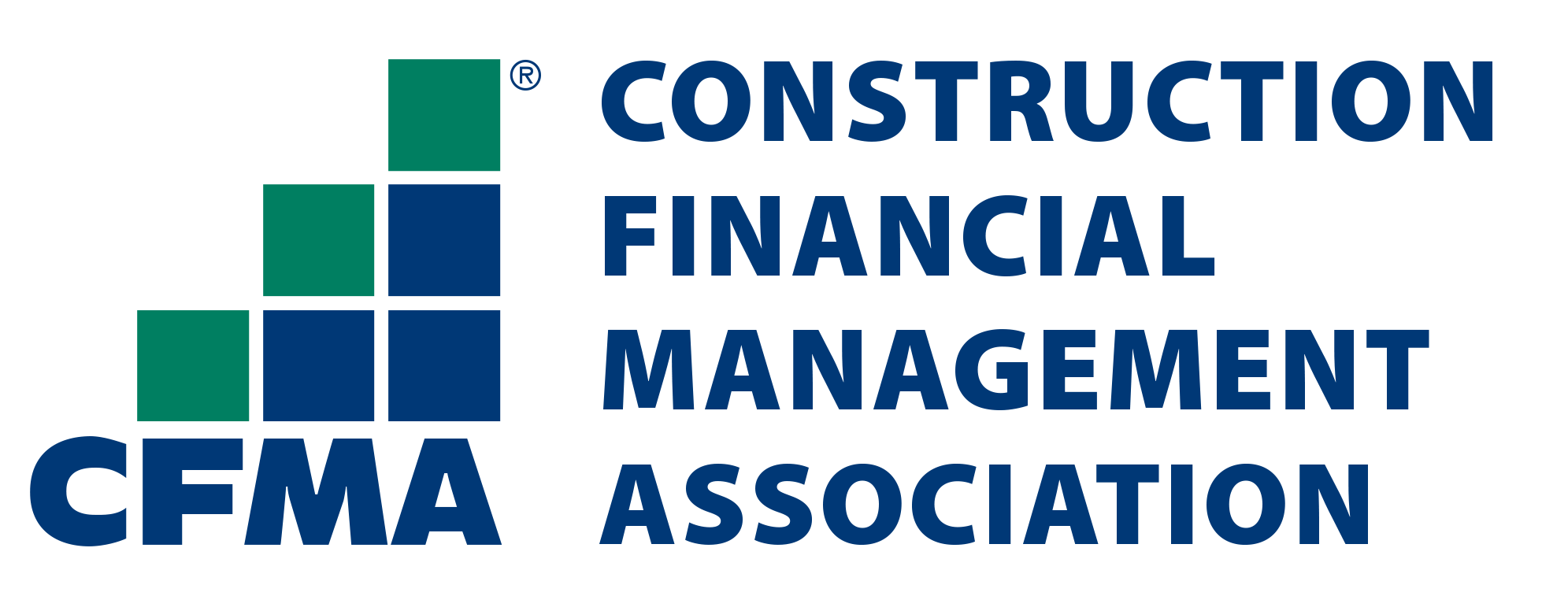
Why Multifamily Accounting Makes or Breaks Your Property Investment
- September 11, 2025
- OHI

Multifamily properties generate substantial income streams, but without proper accounting practices, even the most profitable buildings can become financial nightmares. Property owners who master multifamily accounting gain complete visibility into their investments, make data-driven decisions, and maximize returns. Those who don’t often struggle with cash flow problems, tax complications, and missed opportunities for growth.
Accounting for multifamily properties involves far more complexity than single-family rentals or other real estate investments. You’re managing multiple income sources, diverse expense categories, and intricate financial relationships between tenants, vendors, and stakeholders. Each unit represents a separate revenue stream, while shared expenses like utilities, maintenance, and management fees require careful allocation across the entire property.
The stakes are high. Poor multifamily accounting practices can lead to regulatory violations, tenant disputes, inflated tax liabilities, and inability to secure favorable financing for future acquisitions. Conversely, sophisticated accounting systems enable property owners to identify underperforming units, optimize rent pricing, reduce operational costs, and demonstrate strong financial performance to lenders and investors.
This comprehensive guide explores how strategic accounting transforms multifamily property management from reactive maintenance to proactive wealth building.

Multi-family property accounts refer to the form of financial management of a residential area with multiple rental units. There are apartment complexes, duplexes, or condominiums, tracking income, expenses, and more financial data in assessing profit, ensuring compliance with tax regulations, and ensuring efficient use of the property.
Real estate multifamily accounting operates on principles that differ significantly from traditional business accounting. The primary distinction lies in revenue recognition, expense allocation, and depreciation calculations specific to rental properties.
Multifamily properties generate income through various channels beyond basic rent collection. Primary revenue sources include monthly rent payments, late fees, pet deposits, application fees, parking charges, storage unit rentals, and utility reimbursements. Each income type requires different accounting treatment and affects your tax obligations differently.
Rent revenue should be recorded when earned, not when received. This means if a tenant pays December rent in November, you’ll recognize that income in December’s books. Security deposits require special handling since they’re held in trust and don’t constitute income until forfeited or applied to damages.
Additional income streams like laundry facilities, vending machines, or telecommunications partnerships create separate revenue categories that need tracking for performance analysis and tax reporting.
Multifamily accounting organizes expenses into operating expenses, capital expenditures, and financing costs. Operating expenses include property management fees, maintenance and repairs, utilities, insurance, property taxes, marketing costs, and professional services.
The challenge lies in properly allocating shared expenses across individual units. Common area electricity, building insurance, and maintenance costs must be distributed fairly, typically based on unit square footage, number of bedrooms, or equal allocation depending on the expense type.
Capital expenditures—improvements that extend property life or increase value—require different treatment than routine repairs. New roofing, HVAC system replacements, or unit renovations get capitalized and depreciated over time rather than expensed immediately.
Accounting allows an owner to get a glimpse of the health of the property. Routine financial statements, such as income statements and balance sheets, give the owner and the manager of the property a clue of:
The majority of income of a multi-family property is generated by rents. The accounting systems allow for:
Accurate tracking of income will show areas of shortfall. This means a manager can immediately take corrective measures.
Running a multi-family property entails costs such as:
Accounting ensures these costs are captured and recorded properly, thus allowing for better cost control and budgeting.
Accounting is important in compliance with local, state, and federal tax laws. Good record-keeping makes tax preparation easy and ensures that the owner of the property is able to:

A good chart of accounts (COA) is important to keep track of income and expenses. A typical COA for multi-family properties contains the following:
A clear COA ensures that financial data is categorized properly and easy to analyze.
Security deposits are the tenant’s money held in trust and should be handled with care so that there is no violation of the legal requirements. Accounting systems can track:
Proper management of security deposits reduces disputes with tenants and ensures compliance with state regulations.
Budgets are critical for managing the financial performance of a multi-family property. Accounting tools can help property managers:
A rent roll is a list of all rental units in a property, their tenants, and the rent amounts. Accounting systems simplify rent roll management by:
Financial reporting will determine how well a property performs. Key reports include:
The above reports will guide property owners to decide on rent adjustments, cost-cutting measures, or capital improvements.
Organizing your chart of accounts properly forms the foundation of effective multifamily accounting. A well-structured system enables accurate reporting, simplifies tax preparation, and provides insights needed for strategic decision-making.
Your asset structure should separate the building, land, and improvements for depreciation purposes. Equipment and furniture in common areas require separate tracking. Tenant security deposits need dedicated liability accounts since these funds belong to tenants, not the property owner.
Cash accounts should be segmented by property if you own multiple buildings, with separate operating and capital expenditure accounts. This separation helps maintain appropriate reserves and track cash flow patterns for each investment.
Create separate income accounts for each revenue stream to analyze performance trends. Base rent should be tracked separately from fees and ancillary income. This granular approach reveals which services generate the most profit and where pricing adjustments might be beneficial.
Consider organizing rent income by unit type or floor plan to identify optimal rental rates and demand patterns. This data proves invaluable when setting rents for vacant units or planning property improvements.
Organize expense accounts to match industry standards for easier benchmarking and investor reporting. The Institute of Real Estate Management (IREM) provides standardized account codes that many property management software platforms support.
Group expenses into categories like administrative, maintenance, utilities, marketing, and professional services. Within each category, create specific accounts for detailed tracking. For example, under maintenance, separate accounts for plumbing, electrical, landscaping, and general repairs provide better cost control insights.

Modern property management software has revolutionized multifamily accounting by automating routine tasks and providing real-time financial insights. These platforms integrate rent collection, expense tracking, vendor payments, and financial reporting into unified systems.
Comprehensive property management platforms like AppFolio, Buildium, or Yardi handle multifamily accounting alongside tenant management, maintenance requests, and marketing functions. These integrated systems automatically post rent payments, track late fees, and generate financial statements without manual data entry.
The key advantage lies in data consistency across all property operations. When a tenant pays rent through the online portal, the system automatically updates their account, posts revenue to your books, and adjusts any outstanding balances. This integration eliminates duplicate data entry and reduces errors.
Digital payment processing automates rent collection while maintaining detailed transaction records. Tenants can pay through ACH transfers, credit cards, or mobile apps, with payments automatically recorded in the accounting system.
These platforms handle partial payments, payment plans, and late fee calculations according to lease terms. Advanced systems can even process recurring payments, send payment reminders, and generate collection reports for delinquent accounts.
Modern accounting platforms streamline expense management through automated invoice processing and vendor payment systems. Upload invoices directly into the system, code them to appropriate accounts, and schedule payments according to your cash flow preferences.
Some platforms offer vendor portals where contractors can submit invoices electronically, track payment status, and maintain service history records. This transparency improves vendor relationships and provides better documentation for tax purposes.

Get the appropriate accounting software designed exclusively for property management, like Yardi, AppFolio, or Buildium. There are various features associated with it including:
Saving time and reducing mistakes ensure efficient financial management.
Rent payments will always be received according to the schedule without fear of defaulting because:
Property owners managing their properties should have separate bank accounts for personal and property-related transactions. This simplifies the accounting and gives clarity in tax preparation.
Reconciling accounts is comparing accounting records with bank statements to ensure accuracy. Regular reconciliation identifies:
5. Track Key Metrics
Tracking financial performance metrics helps the property manager and owner stay on top of the operations. Key metrics include the following:
It is important to set aside money for future maintenance or capital improvements to maintain the value of the property. The accounting system can help apportion a portion of rental income to a reserve fund for these purposes.
Effective multifamily accounting generates reports that guide strategic decisions and demonstrate property performance to stakeholders. Standard reports include profit and loss statements, cash flow analyses, and variance reports comparing actual results to budgets.
| Category | Key Elements | Purpose / Importance |
|---|---|---|
| Standard Reports | – Profit & Loss Statements – Cash Flow Analyses – Variance Reports | Guide strategic decisions and demonstrate property performance to stakeholders. |
| Monthly Operating Statements | Revenue Reports: – Break down income by source – Compare current vs. prior periods Expense Reports: – Break down by category – Variance analysis vs. budget | Identify trends, optimize revenue, and flag issues like seasonal dips or rising expenses. |
| Cash Flow Management | – Track actual cash movement – Forecast receipts/payments – Maintain 3–6 months of reserves | Ensure liquidity for repairs, vacancies, or delayed payments; supports long-term stability. |
Multifamily accounting must support complex tax strategies that can significantly impact investment returns. Understanding depreciation rules, deductible expenses, and tax planning opportunities helps maximize after-tax cash flow.
| Category | Key Elements | Purpose / Impact |
|---|---|---|
| Depreciation Strategies | – Standard: 27.5-year straight-line depreciation for residential property – Accelerated depreciation via cost segregation – Shorter schedules: – 5–7 years (e.g., appliances, carpet) – 15 years (e.g., landscaping, parking lots) | Increases early-year tax deductions, improving short-term cash flow. |
| Expense Deductibility | – Fully deductible: management fees, repairs, utilities, insurance, services – Capitalized: improvements that increase value or extend useful life – Deductible repairs: painting, minor plumbing, appliance servicing | Accurate categorization reduces taxable income and avoids IRS penalties. |
| 1031 Exchange Opportunities | – Defer capital gains by reinvesting in “like-kind” properties – Must track: – Basis adjustments – Depreciation recapture – Improvement costs – Requires qualified intermediaries & documentation | Enables portfolio growth while deferring tax liability, preserving capital. |

Multi-family property accounting isn’t just about balancing the books—it’s about handling complexity at scale. Property managers juggle multiple tenants, shared expenses, compliance requirements, and investor expectations, all while trying to keep cash flow healthy. Below are some of the most common challenges they face:
| Challenge | Why It Matters |
|---|---|
| Rent Collection | Multiple tenants, late fees, and concessions make income tracking complicated. |
| Expense Allocation | Shared costs like utilities or landscaping must be fairly divided across units. |
| Compliance & Taxes | Depreciation schedules, 1099s, and audit readiness require precision. |
| Cash Flow Management | Maintaining reserves while covering daily expenses can be difficult. |
| Reporting & Transparency | Owners expect timely, accurate financial reports that manual processes often delay. |
| Technology Gaps | Reliance on spreadsheets or outdated systems leads to errors and inefficiency. |
Outsourced accounting to a specialized firm offers property owners expert support through streamlined processes.
Outsourcing accounting to professionals experienced in real estate can:
An outsourced accounting partner brings the expertise needed to optimize financial management and maximize profitability.

Sophisticated multifamily accounting transforms property ownership from passive income generation to active wealth building. By understanding your numbers deeply, you can identify opportunities, avoid pitfalls, and make informed decisions that compound returns over time.
Property owners who master these accounting principles often expand their portfolios more successfully than those who treat bookkeeping as a necessary evil. The insights gained from proper financial management guide acquisition decisions, renovation priorities, and exit strategies that maximize long-term returns.
Start implementing these practices today, beginning with organized record-keeping and monthly financial reviews. As your comfort with multifamily accounting grows, you’ll discover opportunities for optimization that less sophisticated investors routinely miss.
Q1: What is a multifamily property?
A: A multifamily property is a type of real estate designed to house multiple separate families in distinct housing units within one building or several buildings on a single property. These units are typically rented out to tenants.
Q2: What is an example of a multifamily property?
A: Common examples include apartment complexes, duplexes, triplexes, and fourplexes. For instance, a building with 10 individual rental apartments is a multifamily property.
Q3: What is the difference between residential and multifamily properties?
Q4: What is multifamily accounting?
A: Multifamily accounting is the financial tracking and reporting process for multifamily properties, which includes monitoring income (like rent), expenses (maintenance, utilities, management fees), depreciation, and taxes. It supports decision-making for owners, investors, and managers by providing key reports such as:
Q5: Are multifamily properties considered commercial or residential?
A: It depends on the number of units:
So, a fourplex is residential, while a 10-unit apartment building is commercial.
Q6: How do you calculate the value of a multifamily property?
A: The most common method is the Income Approach, especially for commercial multifamily (5+ units):
Property Value = Net Operating Income (NOI) ÷ Capitalization Rate (Cap Rate)
Example:
If a property generates $100,000 NOI annually and the market cap rate is 6%:
→ $100,000 ÷ 0.06 = $1,666,667 property value
Q7: How do you analyze a multifamily property?
A: A thorough analysis includes:
Contact us for a customized NO OBLIGATION proposal for outsourcing your accounting activities.









